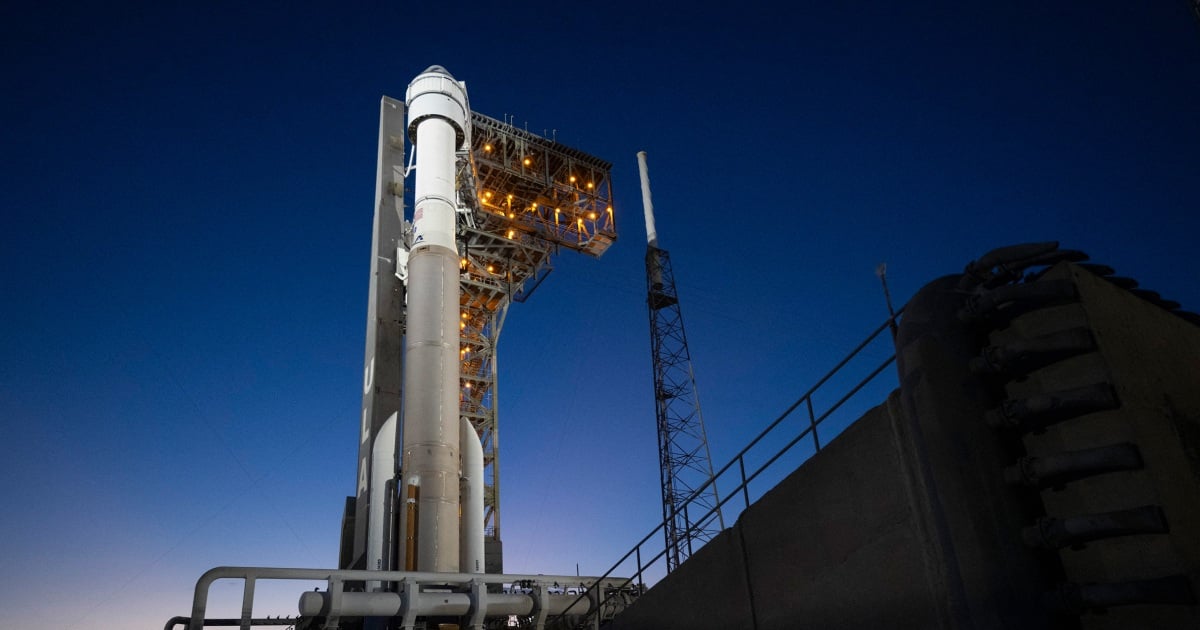The launch attempt was called off roughly two hours ahead of the planned liftoff.
NASA and Boeing were forced to stand down from an attempted launch to the International Space Station on Monday because of a last-minute issue that cropped up with a valve on the spacecraft’s rocket.
Boeing’s Starliner capsule had been scheduled to lift off at 10:34 p.m. ET from Florida’s Cape Canaveral Space Force Station on its first crewed test flight. NASA astronauts Barry “Butch” Wilmore and Sunita Williams were on board the capsule and strapped into their seats when the launch attempt was called off, roughly two hours ahead of the planned liftoff.
A new launch date has not yet been announced.
Mission controllers declared a launch “scrub” after an anomaly was detected on an oxygen valve on United Launch Alliance’s Atlas V rocket, which the Starliner capsule was to ride into orbit.



I would not want to get on a boeing rocket right now
Boeing only made the spacecraft. The rocket was ULA (formerly Lockheed design).
ULA is 50% owned by Boeing. Therefore there’s only a 50% chance you’ll die!
“Product management was never my strong suit.” Bud Askins, Senior Junior Vice President of
Vault-TecBoeing, maybe.Boeing’s share in the company came from the Delta rocket though, which was retired last month. (FWIW, Delta was originally a Douglas design, going back to the late 50’s, but Boeing got it through mergers.)
Right, so you’ll asphyxiate in space
Boeing deserves the scorn, but if it was a joint project with Lockheed it’s probably fine, they’re evil to be sure but they don’t fuck around
Yeah Lockheed always gets the job done right. Usually a decade late and a trillion dollars over budget but the job gets done!
Guess who the other owner of ULA is…
Sure but the rocket being used is Atlas V which is from the Lockheed half of the partnership.
Delta series is what Boeing brought to the ULA partnership. Which they acquired from buying out McDonnell Douglas.
Boeing didn’t design either rocket ULA has flown.
My impression, and correct me if I am wrong, is that Boeings issues are largely management/culture driven (this may just be the plane side of the business though). The Atlas 5 this is being launched on may have been designed by LM, but it was still built under the same management/culture.
But either way, the Atlas 5 is a very reliable rocket, so the scorn isnt really that deserved.
Boeing issues are plane side of the business for sure.
From little I’m aware, part of why Boeing sought a partnership with Lockheed is because they weren’t sure what to do with the aerospace pieces of McDonell Douglas and Rockwell they acquired in the late 90’s. Meaning most of the “Boeing” contribution to ULA came from other companies already serving NASA for decades. Mainly with the Delta rockets.
None of that was core Boeing business. Which is why ULA has been run by Lockheed people the whole time it has existed. Current ULA CEO Tory Bruno was an engineer at Lockheed for a long time before working his way up to where he’s at now. Something like 30 years in the industry.